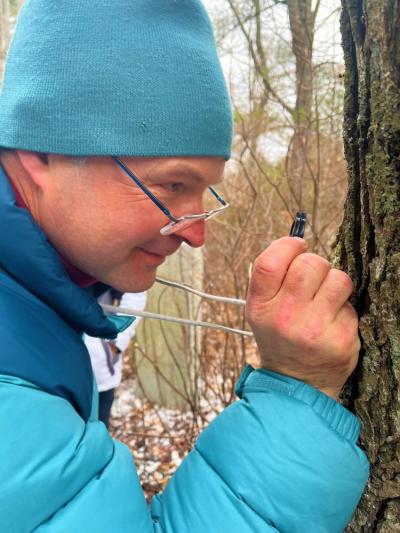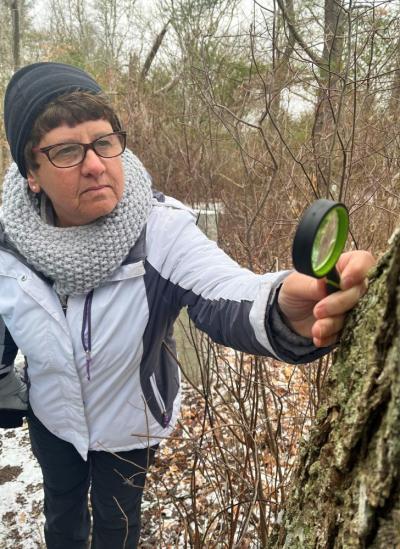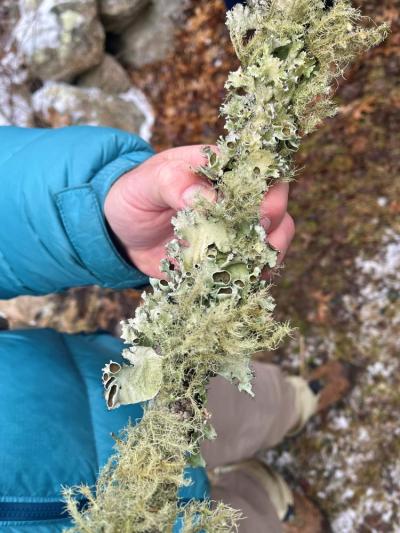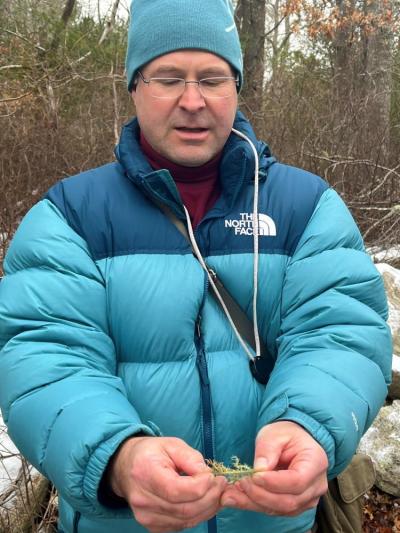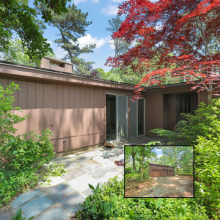Hikers take a likin’ to lichen
MATTAPOISETT — Naturalist Tom Walker has a saying that he uses to remember what lichens are.
The saying goes like this: “Freddy Fungus and Alice Algae took a lichen to each other.”
Lichens, those weird fuzzy things growing on rocks and trees, are organisms made of fungi and algae. They’re small — some so small they can’t be detected by an untrained eye — but they are vital to the environments they live in.
On Sunday, Feb. 26, Walker took a handful of bundled-up lichen likers through Shaw Farm Trail, unveiling the wondrous world of fungi, bacteria and parasites.
Walker declined to be quoted for this story.
He described every aspect of the life and times of lichens, using many technical terms.
“As if I have a prayer of remembering any of this!” Said Maureen McQuillan.
“I’ve never seen an opportunity to come out and talk about lichens,” said Dawn Jackson. “But now I’m intrigued. For me, it’s like learning a new organism. I don’t get to see a lot of new stuff now that I’m getting older.”
She and the other hikers quickly got into the lichen spirit, using magnifying glasses to view the many species growing along the trail.
“It’s beautiful,” said Susan Alves as she observed their organic, flowing shapes and textures. “It’s like a whole little kingdom on a rock.”
Both Alves and Walker are fascinated by lichens’ diversity, and how they have evolved to live in many different environments. Over 20,000 species of lichen grow on all seven continents. Cape Cod alone is home to over 200 species. They prefer to live in old, undisturbed forests and coastal areas with clean ocean air.
Sunday’s cold, damp weather may have bothered the hikers, but the lichens have built up a tolerance to it.
“They have a great will to live,” Alves said.
On his walk through Shaw Farm Trail, Walker carried a plastic bag full of lichens and a laminated piece of paper listing reasons “Why we should care about lichens.”
With their layers of bacteria and oddly-shaped growths, Lichens may not seem glamorous, but they are what’s known as a pioneer species. Everything grows from them, and they are the bedrock of their ecosystem’s food chain.
They provide shelter and food to insects. Birds and squirrels make their nests from them. They give nutrients to the soil and can even break rocks down into soil.
Upon hearing that lichens make up 50% of the winter diet of deer and caribou, Louise LeComte simply said, “Yikes!”
LeComte had no knowledge of lichens before going on Sunday’s hike. She’s more of a moss person herself.
“I’m super curious,” she said. “Kind of the nature of the beast. I love the outdoors.”
LeComte, an avid gardener, was most excited to learn that lichens do not harm the plants they live on.
When a forest is cleared, lichens are the first organisms to come back. However, even they have their limits. The closer one gets to an urban area, the harder lichens are to find. Pollution and deforestation threaten their survival.
Humans have found many uses for lichens, including in the dye and perfume industries. Scientists are still discovering new uses for them. Walker said that, for all the world knows, a lichen could contain the cure for cancer.




